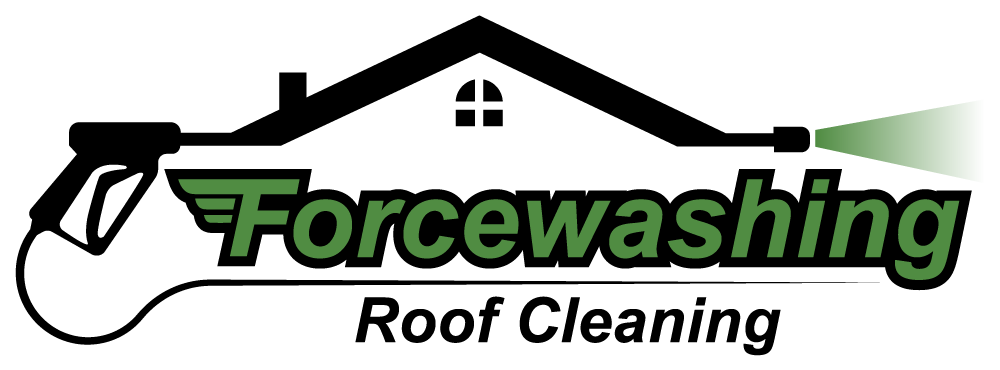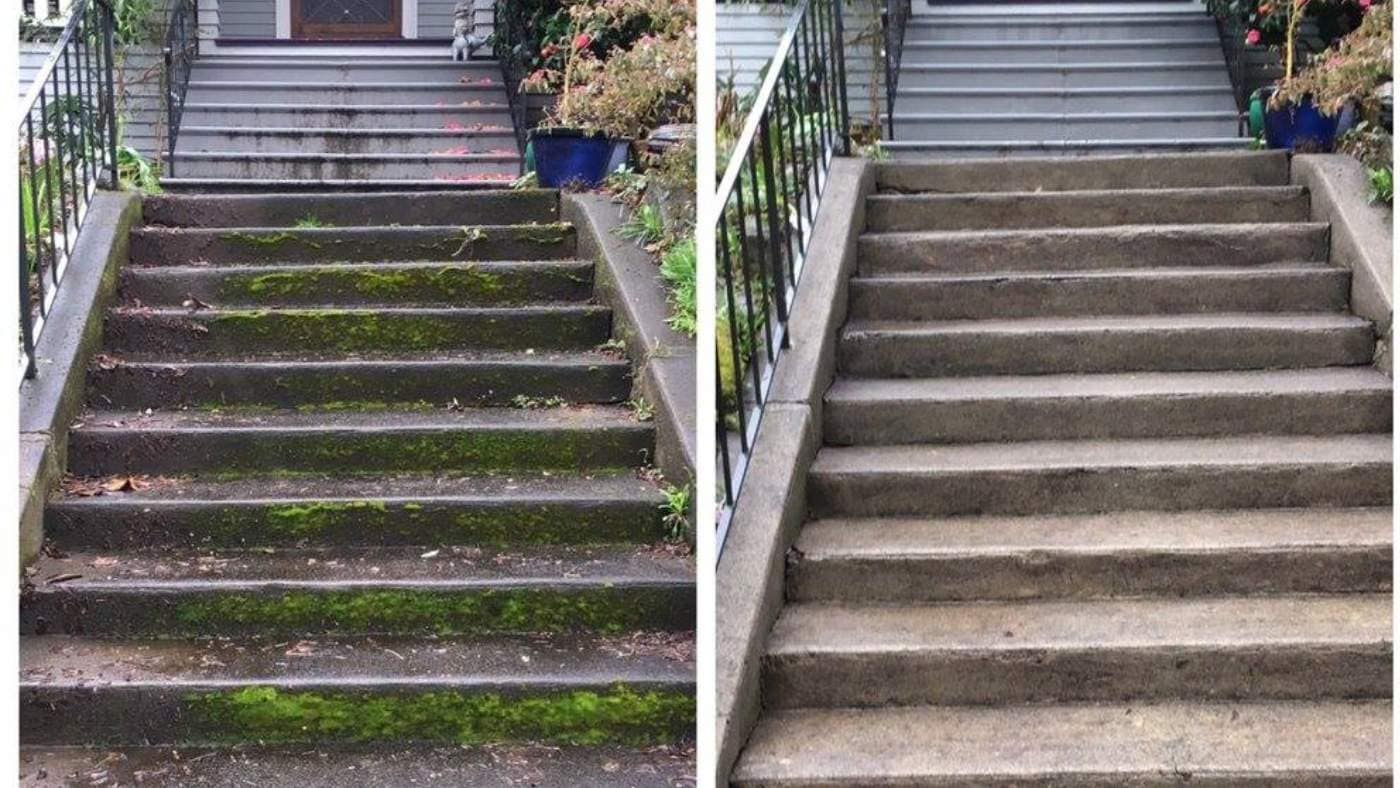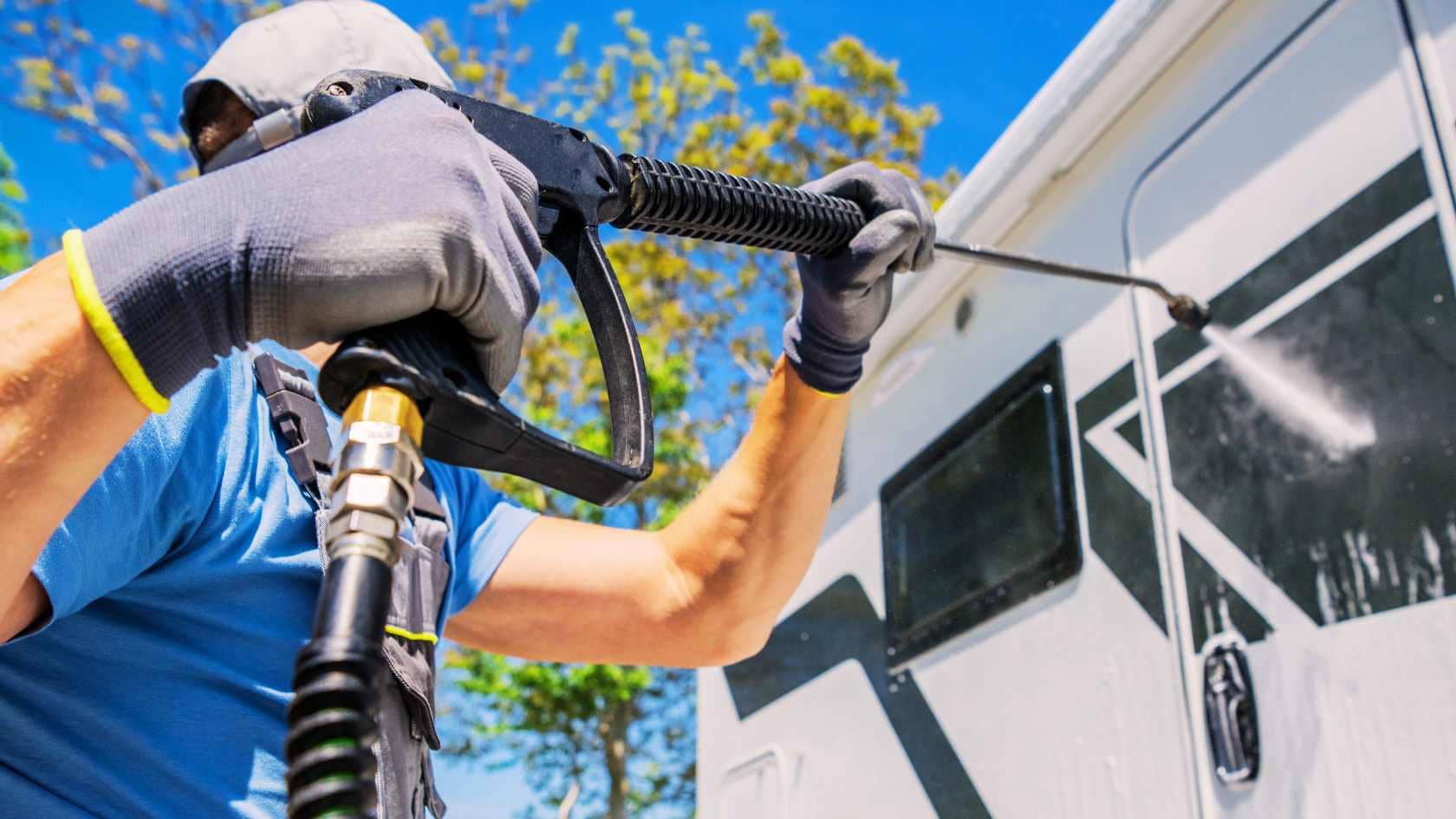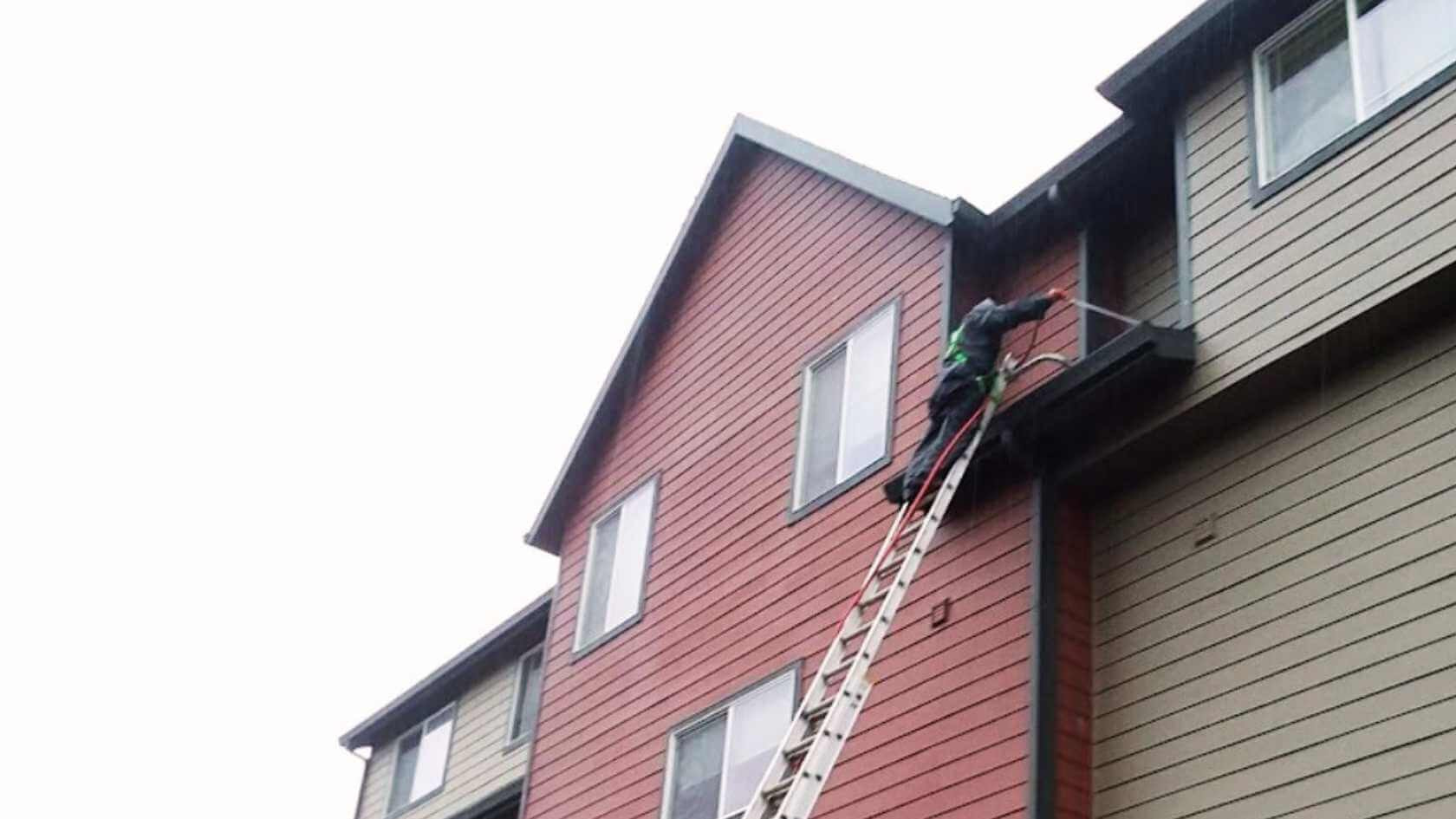Winter is a season of cozy nights, snow-covered landscapes, and festive cheer—but it also brings unique challenges for home maintenance. Among these is the critical task of keeping your gutters clean. While they may seem like a small detail in the grand scheme of home care, gutters play a vital role in protecting your property from winter weather woes.
In this blog, we’ll explore why gutter cleaning during winter is important, the potential hazards of neglecting this task, and practical tips for keeping your gutters in tip-top shape. Whether you’re a seasoned homeowner or new to maintaining a property, this guide will help you keep your home safe and sound this winter season.
How Winter Impacts Your Gutters
- Prevent Water Damage to Your Home – When gutters are clogged, melting snow and ice have nowhere to go, causing water to spill over the edges. This can lead to water seeping into your walls, ceilings, and insulation, creating expensive repair issues such as mold, mildew, and structural weakening.
- Avoid Foundation Cracks and Settling – Overflowing water from clogged gutters can pool around your home’s foundation. During freezing temperatures, this water can seep into small cracks and expand as it freezes, worsening the cracks and potentially leading to settling or shifting in your foundation.
- Preserve Your Landscaping and Walkways – Excess water spilling from your gutters can erode soil, damage plants, and create icy walkways. These issues not only detract from your home’s curb appeal but can also pose safety hazards during winter.
- Protect Your Gutter System From Rust and Corrosion – Leaves, debris, and moisture trapped in your gutters can speed up rust and corrosion, especially during winter’s wet conditions. Regular cleaning helps maintain the integrity and longevity of your gutter system.
- Avoid Pest Infestations – Clogged gutters filled with leaves and debris create a cozy habitat for pests like rodents, birds, and insects. Winter makes them even more likely to seek shelter in these areas, potentially leading to infestations near your home.
- Safeguard Your Roof – Ice dams, caused by blocked gutters and poor drainage, can trap water on your roof. This water can seep under shingles and into your home, causing leaks and structural damage. Keeping gutters clean ensures water and melted snow flow away from your roof as intended.
How to Maintain Clean Gutters During Winter
- Clean Your Gutters Before the First Snowfall
– Prevention is key when it comes to winter gutter cleaning. Remove leaves, twigs, and debris from your gutters in late fall before snow and ice set in. Starting with clean gutters minimizes the risk of clogs and helps water flow freely when snow begins to melt. - Install Gutter Guards
– Gutter guards are an excellent investment to reduce debris accumulation. These covers prevent leaves, sticks, and other materials from entering your gutters while allowing water to flow through. They’re especially useful during winter, as they can reduce the need for frequent cleanings. - Regularly Inspect Gutters and Downspouts
– Throughout winter, make it a habit to check your gutters and downspouts for any blockages or damage. Snow and ice can cause cracks or sagging, so addressing issues promptly can prevent more significant problems like water damage or ice dams. - Rinse with Low-Pressure Water
– On milder winter days, use a low-pressure hose to rinse out any small debris that may have accumulated. Be cautious not to use high-pressure water, as it could freeze or damage your gutter system in colder temperatures. - Dry if Necessary
– If water remains in your gutters after cleaning or rinsing, it’s a good idea to dry them out to prevent ice formation. Use a clean towel or sponge to remove excess moisture, especially in areas prone to pooling water.
How Often Should You Clean Your Gutter During Winter?
During winter, how often you should clean your gutters depends on your climate and environment. In areas with heavy snowfall or frequent ice, monthly cleaning is recommended to prevent blockages and ice dams. After major storms, it’s essential to check for debris or ice buildup and clean as needed. In milder winter climates, once or twice during the season may suffice, especially if gutters are inspected regularly for signs of overflow or clogs. Staying proactive ensures your gutter system functions properly, protecting your home from potential water damage and freezing issues.
Is Professional Gutter Cleaning Cleaning Worth It?
Professional gutter cleaning is often worth the investment, especially if you lack the time, tools, or ability to safely handle the task yourself. Experts bring specialized equipment and knowledge to thoroughly clean gutters, address hard-to-reach areas, and identify potential issues like leaks or structural damage. Hiring professionals reduces the risk of accidents, particularly in multi-story homes or during icy winter conditions. Additionally, their expertise can extend the lifespan of your gutter system and prevent costly repairs caused by neglect, making it a smart choice for homeowners prioritizing convenience and safety.
Final Thoughts
Maintaining clean gutters during winter is not just a matter of convenience—it’s an essential part of protecting your home from the harsh effects of the season. From preventing water damage and foundation cracks to safeguarding your roof and landscaping, clean gutters play a vital role in keeping your property safe and functional.
By taking proactive steps like clearing debris before the first snowfall, inspecting regularly, and investing in tools like gutter guards, you can avoid costly repairs and enjoy peace of mind all winter long. Remember, a little effort now can save you significant time, money, and stress.
Clean gutters are a cornerstone of winter home maintenance, protecting your property from water damage, ice dams, and structural issues. Whether you choose to tackle the task yourself or hire professionals, keeping your gutters clear ensures they function effectively throughout the season. By staying proactive, inspecting regularly, and addressing potential problems early, you can save time, money, and stress. A well-maintained gutter system not only safeguards your home but also provides peace of mind, allowing you to focus on enjoying the winter season without worry.





















